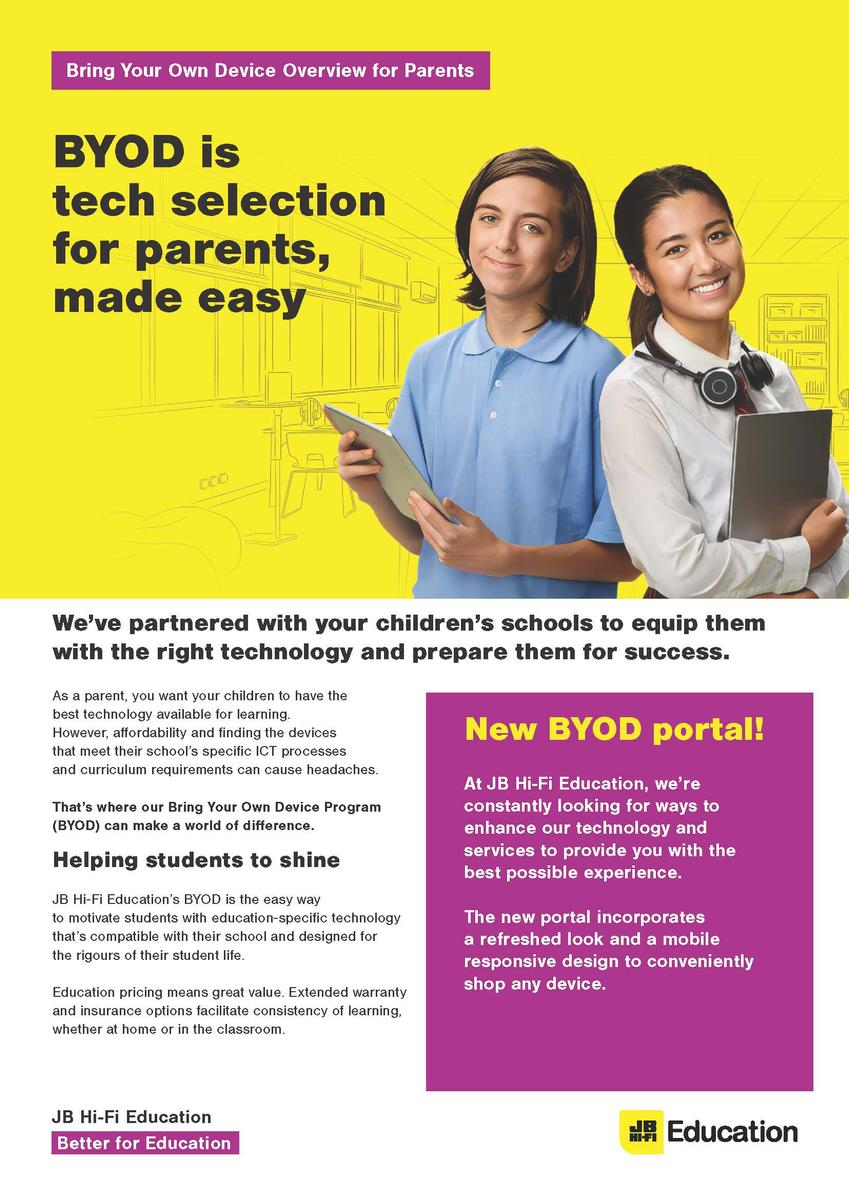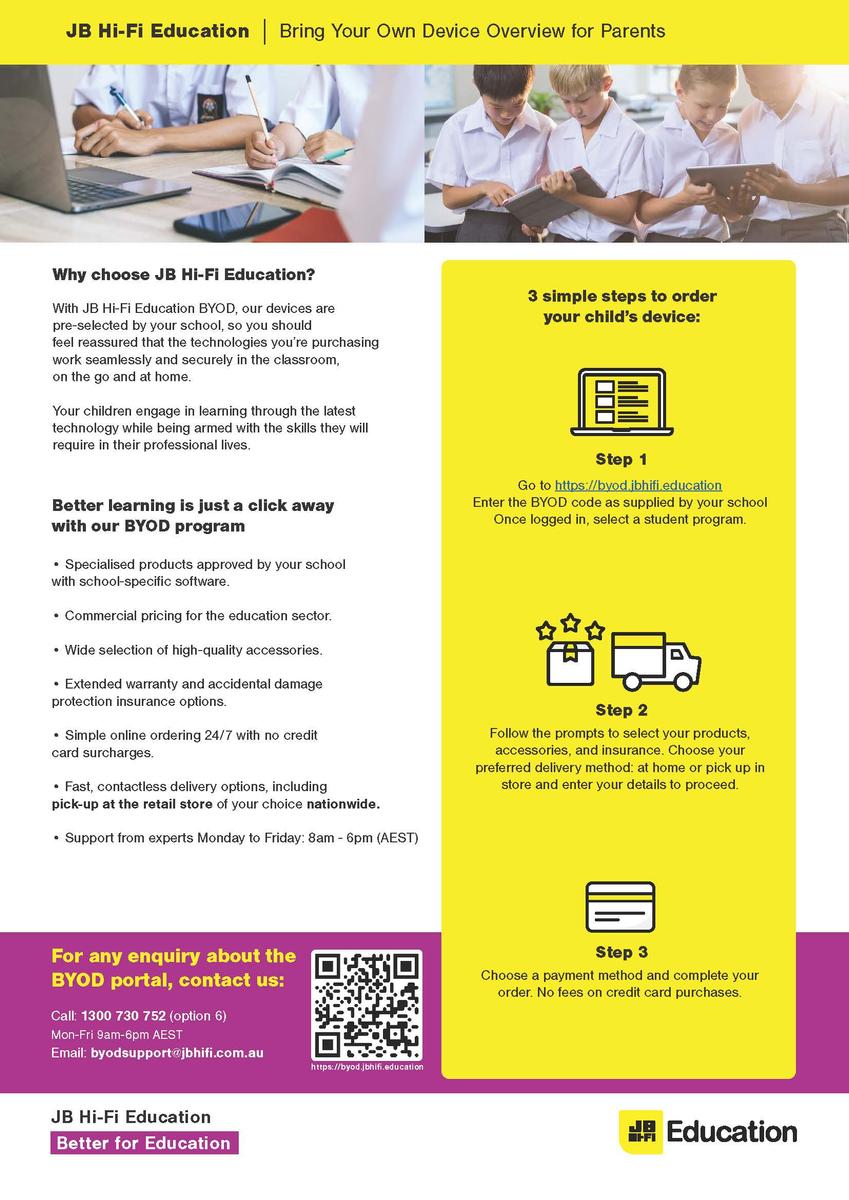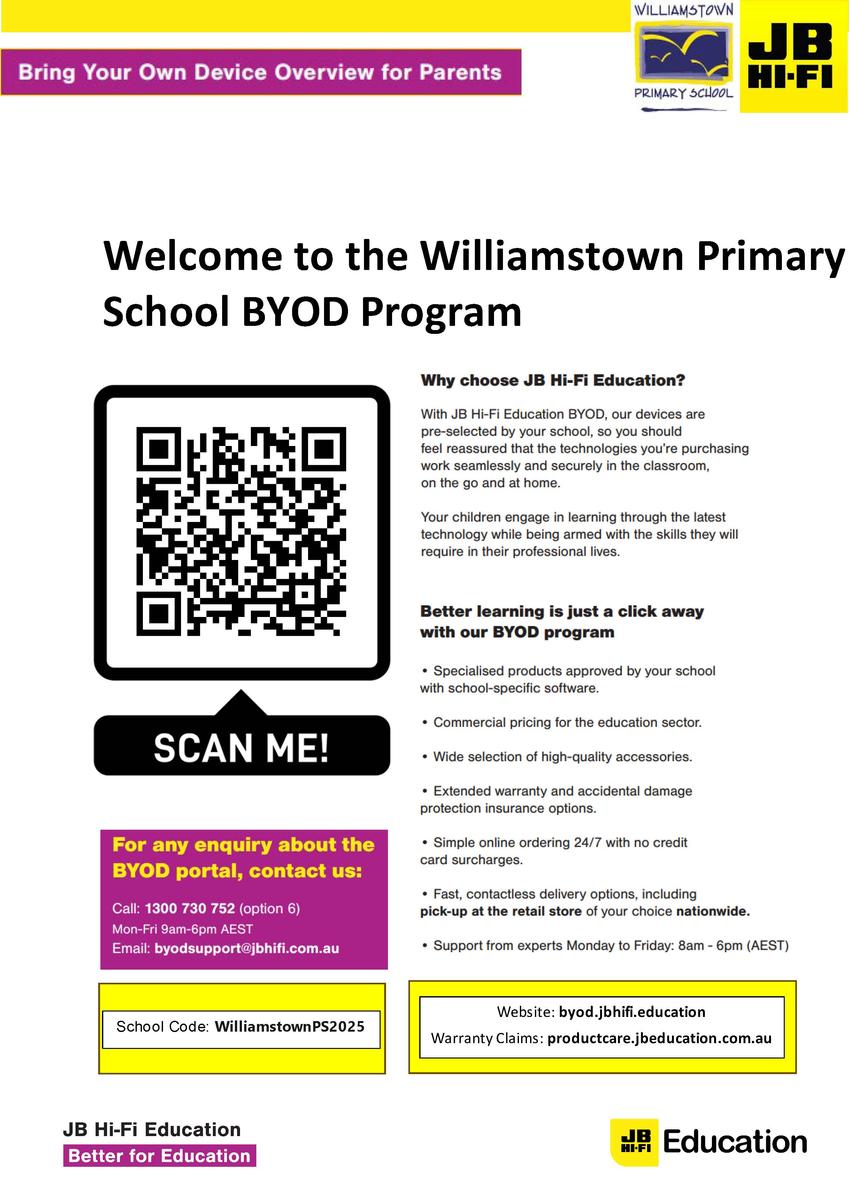Digital Learning
Resources to support families and students to be safe and responsible digital citizens

Digital Learning
Resources to support families and students to be safe and responsible digital citizens
Hi WPS families,
At our recent parent information evening, Alanah & Madeline Foundation shared some information about dealing with bullying, in particular, cyberbullying and unwanted contact.
Bullying as defined by the Kids Helpline -
Bullying behaviours:
Some other serious types of behaviours, like discrimination, harassment and abuse, can overlap with bullying and are actually against the law.
Bullying is not the same as
Kids Health defines cyberbullying as the use of technology to harass, threaten, embarrass, or target another person. Online threats and mean, aggressive, or rude texts, tweets, posts, or messages all count. So does posting personal information, pictures, or videos designed to hurt or embarrass someone else.
If your child is dealing with cyberbullying, they can follow these steps
Most importantly, talk to someone about it. We encourage students to find a trusted adult to discuss this with.
If your child is dealing with online issues, please come forward and speak to Mat at school. If you can have screenshots (collection of evidence), that will help.
Unwanted Contact
Unwanted contact is any online communication that makes a child feel uncomfortable, unsafe or harassed. It can be with a stranger or someone they know. Encourage your child to be wary when someone:
For more information on unwanted contact – click on this link for information from the eSafety Commissioner.
Regards,
Steven Puhar
Leading Teacher - Curriculum Leader
Williamstown Primary School acknowledges the recent Human Rights Watch report on Edutech in privacy violations and findings.
Williamstown Primary works closely with the DET’s Digital Learning and privacy teams to ensure that all DET guidelines regarding the implementation of digital devices are followed.
Attached is the school’s digital statement outlining the online platforms and their privacy policies that the school uses on a day-to-day basis.
As part of the school’s ongoing student education, the school will further enhance key understandings around user privacy, as well as the tools available on selected devices.
This will be embedded within the current school’s eSafety program that currently sees students undertake numerous digital workshops run by both school leadership, classroom teachers and external providers such as the Alannah and Madeline Foundation’s eSmart organisation.
Parents are advised of a key iPad feature to turn tracking off. This feature will be explicitly demonstrated to students within the school-based workshops.
Go to Settings > Privacy > Tracking.
The list shows the apps that requested permission to track you. You can turn permission on or off for any app on the list.
To stop all apps from asking permission to track you, turn off Allow Apps to Request to Track (at the top of the screen).
Below is a link to the schools Digital Learning page. This page contains key information about the school's implementation of the digital technology curriculum as a tool within a blended learning environment.
The JB HiFi purchase portal is again available for Willy PS families. The schools recommended minimum specification device is the iPad Gen 9, but the portal does also offer a range of iPad models and accessories. Although students have access to bluetooth keyboards we also recommend the Smart Keyboard or a 3rd party keyboard incorporated within the cover. This accessory will add value to the users experience.
Please also note the change in School Code.
Although the portal is set up through JB HI-FI on behalf of the school, we encourage families to explore all purchase options.






Please find attached documents released by DET.
The first document gives a deeper understanding of the DET licences G Suite for Education, how it is set up and how it differs from the public Google platform.
The second document provides families with supporting resources on how to protect individuals privacy online.
The Department of Education information pack for parents is available from the following link: